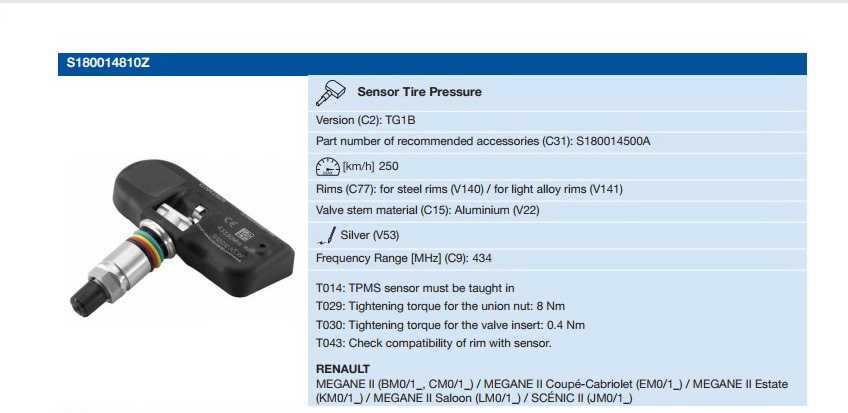Hide Show
If you've inflated your tires, but your tire pressure light remains on, this means you may have to reset it. The tire pressure monitoring system (TPMS) on your GMC truck or Cadillac is critical to keeping you and your tires safe while driving around Bozeman or Missoula, so it's important to make sure it's activated and running properly. If you find your TPMS light on but you don't think it should be, take these steps, or bring your vehicle to our tire center at GMC of Billings in Billings, MT.
Confident that your tires are full at a healthy pressure? Here are some steps you can take to troubleshoot your tire pressure monitor light and reset it.
If none of these steps work, call or vist us from Great Falls to schedule an appointment with one of our service technicians. Or, if you're not confident about handling any of these steps, get in touch with us to help you out with service tips. Better to be safe and have a professional, GMC- or Cadillac-certified technician handle your maintenance if you're unsure of what to do.
Or, if you're not confident about handling any of these steps, get in touch with us to help you out with service tips. Better to be safe and have a professional, GMC- or Cadillac-certified technician handle your maintenance if you're unsure of what to do.
A flashing tire pressure light can sometimes be a sign that the battery needs to be replaced, as tire pressure sensors often use the battery. However, a flashing tire pressure light can also signal a problem with one of the sensors.
Determining why your TPMS light won't turn off can be tricky, so we're happy to help you out at our GMC service center near Missoula. Our certified technicians can help you diagnose your tire pressure light issues quickly and at a low rate - especially if you come from Helena to visit our tire center with a service coupon special in hand. Get in touch if you have any questions about the steps outlined above or any other issue, such as how to remove car dents and scratches.
First Name*
Last Name*
Contact Me by*
EmailPhone
GMC of Billings
840 South Shiloh
Billings, MT 59106
Visit us at: 840 South Shiloh Billings, MT 59106
Loading Map...
; ;
Like many cars in the United States, the GMC Sierra comes with plenty of safety features to make driving safer. One of these is the Tire Pressure Monitoring System, or TPMS. It sends a signal from each tire to the central computer and indicates if one of the tires has lost pressure. But, sometimes, it can have issues. So, let’s find out how to reset the Sierra’s TPMS.
One of these is the Tire Pressure Monitoring System, or TPMS. It sends a signal from each tire to the central computer and indicates if one of the tires has lost pressure. But, sometimes, it can have issues. So, let’s find out how to reset the Sierra’s TPMS.
To reset the tire pressure sensor on a GMC Sierra, you must start with the vehicle turned off. Turn your key to the “ON” position, but don’t start the car. Find the “Reset TPMS” button (your manual indicates where it’s located), then hold it until the “TIRE PRESSURE” light blinks three times. Then, start the car and wait for 20 minutes for the light to reset. There are other reasons why the light might turn on, and we’ll go through them in this article.
Tire pressure sensors work by measuring the pressuring inside the tire. They are small devices that attach to the wheel and constantly feed the vehicle’s computer. When one tire loses pressure, the sensor sends a signal to the driver, causing the TPMS light to illuminate. Most of the time, the TPMS light goes away by inflating the tires. If it turns on again, then there’s a leak somewhere.
Most of the time, the TPMS light goes away by inflating the tires. If it turns on again, then there’s a leak somewhere.
But, if you’ve inflated your tires and the light doesn’t turn off, the sensor might need resetting. Because TPMS work under constant pressure, literally, then might not react fast to changes. In these cases, you might have to go through this procedure.
You might not know this, but the US implemented mandatory pressure sensors on all vehicles in 2007. Tires are a vital component of safe driving. If they’re not in optimum conditions, serious or deadly accidents can occur.
But, it’s hard for drivers to know if they’re deflated. After a series of accidents and lawsuits throughout the ’80s and ’90s, the Government implemented the TREAD Act. So, from then on, GMC Sierras have TPMS and all other vehicles sold in the US.
We’ve explained how to reset the TPMS, but let’s look at the procedure in detail and discuss other essential aspects.
When there are issues with your tire pressure or TPMS, your dash indicates “TIRE PRESSURE” or “CHECK TIRE PRESSURE.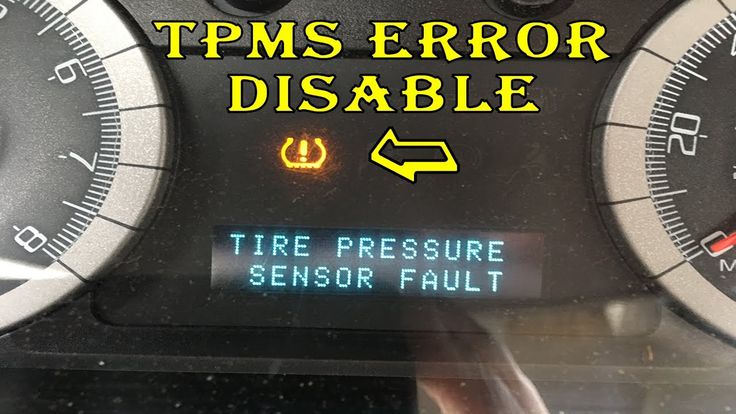 ” If this happens, you can do the following.
” If this happens, you can do the following.
To reset a tire pressure sensor monitor, you must first inflate the tires to the recommended pressure. Yes, this sounds logical, but it’s the first and easiest step to solving any warning lights that might appear on your dash.
Once you’ve inflated the tires, take your Sierra for a drive. Ideally, you should last about 10 minutes, at or above 50 mph. Why this speed and for this long? The TPMS needs time to adjust to the pressure.
The air inside a tire in motion has a different density (as it gets warmer) than a tire at rest. As the vehicle moves, the air molecules will begin to stabilize and equalize pressure all over the tire wall, giving you a more precise reading.
If you’ve done this correctly, the TPMS light should turn off the next time your start your car. But, when this doesn’t happen, then you might have to go through the following procedure.
With your truck turned off, turn your key or starter button to the “ON” position without starting your car. Find the TPMS button and press it until the “TIRE PRESSURE” light blinks three times. Start the Sierra and wait for 20 minutes, which should reset the TPMS and light.
Find the TPMS button and press it until the “TIRE PRESSURE” light blinks three times. Start the Sierra and wait for 20 minutes, which should reset the TPMS and light.
When these steps don’t work, a possible solution is to inflate your tire to 3 PSI above the recommended pressure. Then, deflate your tires entirely. This drastic difference in pressure helps the TPMS reset. Inflate your tires to the recommended pressure and check whether the “TIRE PRESSURE” light turns off. Do this with your car turned off.
The final step is to disconnect the battery, then honk the horn for three seconds. Yes, that’s right. Honk the horn.
We’ll explain why this step works further in the article. For the moment, remember that the honk consumes a lot of battery, so honking it discharges any excess charge in the system. Reconnect the battery, start the car, and then check if the “TIRE PRESSURE” light has turned off.
If none of these steps work, or you don’t feel up to the task of resetting the TPMS, contact a certified professional. They will go through a “relearning” process.
They will go through a “relearning” process.
These technicians do an entire step-by-step process, checking for possible faults and error codes. It should be a fast procedure and not too expensive.
Imagine a large, thin strip of metal that contours perfectly with the rim. It reacts to how much pressure the air generates over it, and it’s calibrated to a determined ideal pressure.
The strip feels less pressure when there’s a leak. So, it sends a signal to the computer.
But, also, it’s connected to the filler valve. So, it also measures whether there’s a leak in this area. A faulty valve could trigger the “TIRE PRESSURE” light.
GMC Sierras have TPMS and all other vehicles sold in the US. We’ve explained how to reset the TPMS, but let’s look at the procedure in detail and discuss other essential aspects. Step by step process to reset a tire pressure sensor on the GMC Sierra When there are issues with your tire pressure or TPMS, your dash indicates "TIRE PRESSURE" or "CHECK TIRE PRESSURE.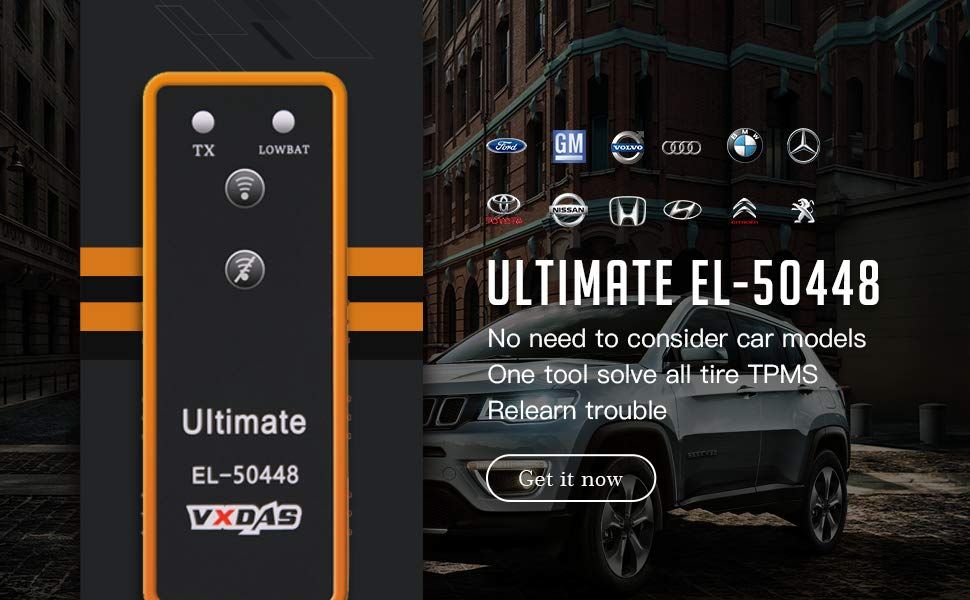 " If this happens, you can do the following. To reset a tire pressure sensor monitor, you must first inflate the tires to the recommended pressure. Yes, this sounds logical, but it’s the first and easiest step to solving any warning lights that might appear on your dash. Once you’ve inflated the tires, take your Sierra for a drive. Ideally, you should last about 10 minutes, at or above 50 mph. Why this speed and for this long? The TPMS needs time to adjust to the pressure. The air inside a tire in motion has a different density (as it gets warmer) than a tire at rest. As the vehicle moves, the air molecules will begin to stabilize and equalize pressure all over the tire wall, giving you a more precise reading. If you’ve done this correctly, the TPMS light should turn off the next time your start your car. But, when this doesn’t happen, then you might have to go through the following procedure. With your truck turned off, turn your key or starter button to the "ON" position without starting your car.
" If this happens, you can do the following. To reset a tire pressure sensor monitor, you must first inflate the tires to the recommended pressure. Yes, this sounds logical, but it’s the first and easiest step to solving any warning lights that might appear on your dash. Once you’ve inflated the tires, take your Sierra for a drive. Ideally, you should last about 10 minutes, at or above 50 mph. Why this speed and for this long? The TPMS needs time to adjust to the pressure. The air inside a tire in motion has a different density (as it gets warmer) than a tire at rest. As the vehicle moves, the air molecules will begin to stabilize and equalize pressure all over the tire wall, giving you a more precise reading. If you’ve done this correctly, the TPMS light should turn off the next time your start your car. But, when this doesn’t happen, then you might have to go through the following procedure. With your truck turned off, turn your key or starter button to the "ON" position without starting your car. Find the TPMS button and press it until the "TIRE PRESSURE" light blinks three times. Start the Sierra and wait for 20 minutes, which should reset the TPMS and light. When these steps don’t work, a possible solution is to inflate your tire to 3 PSI above the recommended pressure. Then, deflate your tires entirely. This drastic difference in pressure helps the TPMS reset. Inflate your tires to the recommended pressure and check whether the "TIRE PRESSURE" light turns off. Do this with your car turned off. The final step is to disconnect the battery, then honk the horn for three seconds. Yes, that’s right. Honk the horn. We’ll explain why this step works further in the article. For the moment, remember that the honk consumes a lot of battery, so honking it discharges any excess charge in the system. Reconnect the battery, start the car, and then check if the "TIRE PRESSURE" light has turned off. If none of these steps work, or you don’t feel up to the task of resetting the TPMS, contact a certified professional.
Find the TPMS button and press it until the "TIRE PRESSURE" light blinks three times. Start the Sierra and wait for 20 minutes, which should reset the TPMS and light. When these steps don’t work, a possible solution is to inflate your tire to 3 PSI above the recommended pressure. Then, deflate your tires entirely. This drastic difference in pressure helps the TPMS reset. Inflate your tires to the recommended pressure and check whether the "TIRE PRESSURE" light turns off. Do this with your car turned off. The final step is to disconnect the battery, then honk the horn for three seconds. Yes, that’s right. Honk the horn. We’ll explain why this step works further in the article. For the moment, remember that the honk consumes a lot of battery, so honking it discharges any excess charge in the system. Reconnect the battery, start the car, and then check if the "TIRE PRESSURE" light has turned off. If none of these steps work, or you don’t feel up to the task of resetting the TPMS, contact a certified professional. They will go through a "relearning" process. These technicians do an entire step-by-step process, checking for possible faults and error codes. It should be a fast procedure and not too expensive. How the GMC Sierra tire pressure sensor works Imagine a large, thin strip of metal that contours perfectly with the rim. It reacts to how much pressure the air generates over it, and it’s calibrated to a determined ideal pressure. The strip feels less pressure when there’s a leak. So, it sends a signal to the computer. But, also, it’s connected to the filler valve. So, it also measures whether there’s a leak in this area. A faulty valve could trigger the "TIRE PRESSURE" light. Because the TPMS requires energy, it uses the vehicle’s battery as a power source. But, it doesn’t use it permanently. In fact, most TPMS use power every ten or twenty minutes to avoid battery consumption. Due to this intermittency, you see that most of the resetting procedures require time intervals. They allow the TPMS not only to regulate but also have the power to generate a signal.
They will go through a "relearning" process. These technicians do an entire step-by-step process, checking for possible faults and error codes. It should be a fast procedure and not too expensive. How the GMC Sierra tire pressure sensor works Imagine a large, thin strip of metal that contours perfectly with the rim. It reacts to how much pressure the air generates over it, and it’s calibrated to a determined ideal pressure. The strip feels less pressure when there’s a leak. So, it sends a signal to the computer. But, also, it’s connected to the filler valve. So, it also measures whether there’s a leak in this area. A faulty valve could trigger the "TIRE PRESSURE" light. Because the TPMS requires energy, it uses the vehicle’s battery as a power source. But, it doesn’t use it permanently. In fact, most TPMS use power every ten or twenty minutes to avoid battery consumption. Due to this intermittency, you see that most of the resetting procedures require time intervals. They allow the TPMS not only to regulate but also have the power to generate a signal. The TPMS is reliable; it has to be, but it only operates at a determined temperature range, and extreme conditions might cause it to fail. So let’s discuss some of the reasons why the TPMS has issues. Why does a tire sensor fail? The GMC Sierra’s TPMS operates in temperatures between -10 and 70 Celsius. Sure, these seem extreme, but for those living in northern regions, you might face these temperatures for months at a time. The low (or high) temperatures cause the metal in the sensor to be more rigid, making it less sensitive to changes in pressure. So, if you live up north, don’t be surprised if you find that the TPMS presents issues in the most challenging winters. Another possible reason for failure is a decaying battery since the TPMS directly uses it for power. An irregular source of energy could damage components inside the TPMS. Aerosol tire fillers might save you on the fly. But, the chemicals inside them can cause a world of hurt to TPMS. Since the device is so sensitive, any excess chemical and glue can interfere with the signal.
The TPMS is reliable; it has to be, but it only operates at a determined temperature range, and extreme conditions might cause it to fail. So let’s discuss some of the reasons why the TPMS has issues. Why does a tire sensor fail? The GMC Sierra’s TPMS operates in temperatures between -10 and 70 Celsius. Sure, these seem extreme, but for those living in northern regions, you might face these temperatures for months at a time. The low (or high) temperatures cause the metal in the sensor to be more rigid, making it less sensitive to changes in pressure. So, if you live up north, don’t be surprised if you find that the TPMS presents issues in the most challenging winters. Another possible reason for failure is a decaying battery since the TPMS directly uses it for power. An irregular source of energy could damage components inside the TPMS. Aerosol tire fillers might save you on the fly. But, the chemicals inside them can cause a world of hurt to TPMS. Since the device is so sensitive, any excess chemical and glue can interfere with the signal.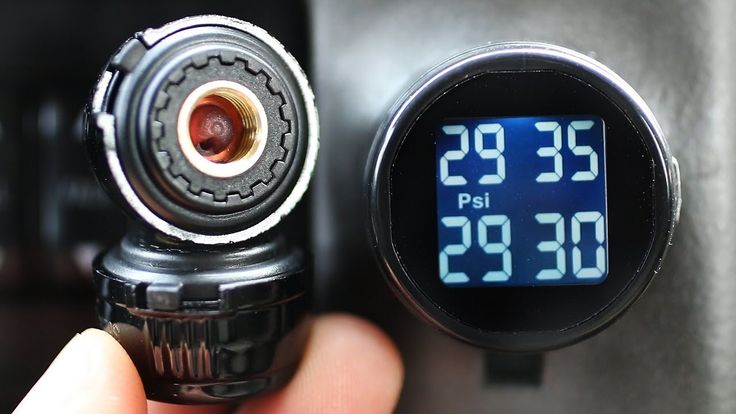 The average lifespan of a TPMS is about five years, which is also the average time a tire can last. So, it’s not unusual to have TPMS issues in these intervals. Also, use a certified tire shop when replacing them. Improper handling can damage the TPMS permanently. A TPMS is not expensive, costing from $25 to $60. You can buy them online and ship them anywhere, but replacing them does require technical knowledge. So, these are some of the reasons why TPMS can fail. But, what can you do to keep them functioning as long as possible? Let’s find out in the next section. Some cautions to take with the TPMS As we’ve said in the previous section, do not use aerosol tire fillers. They have adhesives and chemicals that will damage the TPMS. Also, once you’ve filled a tire, changing it is close to a nightmare. Just ask any tire technician. Though they are less frequent, try to avoid brass valve inserts. Always use nickel-plated valve inserts, as they do not chemically react with aluminum inside the sensors.
The average lifespan of a TPMS is about five years, which is also the average time a tire can last. So, it’s not unusual to have TPMS issues in these intervals. Also, use a certified tire shop when replacing them. Improper handling can damage the TPMS permanently. A TPMS is not expensive, costing from $25 to $60. You can buy them online and ship them anywhere, but replacing them does require technical knowledge. So, these are some of the reasons why TPMS can fail. But, what can you do to keep them functioning as long as possible? Let’s find out in the next section. Some cautions to take with the TPMS As we’ve said in the previous section, do not use aerosol tire fillers. They have adhesives and chemicals that will damage the TPMS. Also, once you’ve filled a tire, changing it is close to a nightmare. Just ask any tire technician. Though they are less frequent, try to avoid brass valve inserts. Always use nickel-plated valve inserts, as they do not chemically react with aluminum inside the sensors. In time, the brass inserts will deteriorate and might even fuse with the TPMS. Once you’ve removed any rubber seal, replace it with a new one. The old one most likely has lost its elasticity. Finally, do not use excessive torque on either the valve and the sensor. These are sensitive devices that will break easily. Closing thoughts The GMC Sierra comes with a TPMS since 2007. It’s a valuable device that helps you be aware of the pressure in your tires. It sends out a warning if the pressure has dropped, allowing to fix any issues that might make driving unsafe. It can last an average of five years and is generally reliable. But, like all devices, it can have issues. The most common is the "TIRE PRESSURE" light on your dashboard. This means that one or more tires have lost pressure. The first step to remove this warning light is to fill up your tires. If this doesn’t work, there are many easy procedures to follow to reset the TPMS and turn the warning light off. If you happen to see this light turn on, go through these steps.
In time, the brass inserts will deteriorate and might even fuse with the TPMS. Once you’ve removed any rubber seal, replace it with a new one. The old one most likely has lost its elasticity. Finally, do not use excessive torque on either the valve and the sensor. These are sensitive devices that will break easily. Closing thoughts The GMC Sierra comes with a TPMS since 2007. It’s a valuable device that helps you be aware of the pressure in your tires. It sends out a warning if the pressure has dropped, allowing to fix any issues that might make driving unsafe. It can last an average of five years and is generally reliable. But, like all devices, it can have issues. The most common is the "TIRE PRESSURE" light on your dashboard. This means that one or more tires have lost pressure. The first step to remove this warning light is to fill up your tires. If this doesn’t work, there are many easy procedures to follow to reset the TPMS and turn the warning light off. If you happen to see this light turn on, go through these steps. But, as always, if you don’t feel qualified, be sure to take your car to a certified technician for a checkup. ” class=”wp-image-23495″/>
But, as always, if you don’t feel qualified, be sure to take your car to a certified technician for a checkup. ” class=”wp-image-23495″/>Because the TPMS requires energy, it uses the vehicle’s battery as a power source. But, it doesn’t use it permanently. In fact, most TPMS use power every ten or twenty minutes to avoid battery consumption.
Due to this intermittency, you see that most of the resetting procedures require time intervals. They allow the TPMS not only to regulate but also have the power to generate a signal.
The TPMS is reliable; it has to be, but it only operates at a determined temperature range, and extreme conditions might cause it to fail. So let’s discuss some of the reasons why the TPMS has issues.
The GMC Sierra’s TPMS operates in temperatures between -10 and 70 Celsius. Sure, these seem extreme, but for those living in northern regions, you might face these temperatures for months at a time.
The low (or high) temperatures cause the metal in the sensor to be more rigid, making it less sensitive to changes in pressure. So, if you live up north, don’t be surprised if you find that the TPMS presents issues in the most challenging winters.
So, if you live up north, don’t be surprised if you find that the TPMS presents issues in the most challenging winters.
Another possible reason for failure is a decaying battery since the TPMS directly uses it for power. An irregular source of energy could damage components inside the TPMS.
Aerosol tire fillers might save you on the fly. But, the chemicals inside them can cause a world of hurt to TPMS. Since the device is so sensitive, any excess chemical and glue can interfere with the signal.
The average lifespan of a TPMS is about five years, which is also the average time a tire can last. So, it’s not unusual to have TPMS issues in these intervals. Also, use a certified tire shop when replacing them. Improper handling can damage the TPMS permanently.
A TPMS is not expensive, costing from $25 to $60. You can buy them online and ship them anywhere, but replacing them does require technical knowledge.
So, these are some of the reasons why TPMS can fail. But, what can you do to keep them functioning as long as possible? Let’s find out in the next section.
As we’ve said in the previous section, do not use aerosol tire fillers. They have adhesives and chemicals that will damage the TPMS. Also, once you’ve filled a tire, changing it is close to a nightmare. Just ask any tire technician.
Though they are less frequent, try to avoid brass valve inserts. Always use nickel-plated valve inserts, as they do not chemically react with aluminum inside the sensors. In time, the brass inserts will deteriorate and might even fuse with the TPMS.
Once you’ve removed any rubber seal, replace it with a new one. The old one most likely has lost its elasticity.
Finally, do not use excessive torque on either the valve and the sensor. These are sensitive devices that will break easily.
The GMC Sierra comes with a TPMS since 2007. It’s a valuable device that helps you be aware of the pressure in your tires. It sends out a warning if the pressure has dropped, allowing to fix any issues that might make driving unsafe.
It can last an average of five years and is generally reliable. But, like all devices, it can have issues. The most common is the “TIRE PRESSURE” light on your dashboard. This means that one or more tires have lost pressure.
The first step to remove this warning light is to fill up your tires. If this doesn’t work, there are many easy procedures to follow to reset the TPMS and turn the warning light off.
If you happen to see this light turn on, go through these steps. But, as always, if you don’t feel qualified, be sure to take your car to a certified technician for a checkup.
You are an enthusiastic owner of a recent car, the joy of tactile devices, the integrated technologies should bring you the ease and comfort of using your GMC Terrain, however, which is to say that the technology is talking about electricity, and, as we all unfortunately often we know the problem to be solved. Today we will focus on the tire pressure sensor and specifically on the tire pressure sensor. how to reset the tire pressure sensor on the GMC Terrain so that this indicator never appears on the dashboard again. To do this, we will divide our content into two parts: first we will consider the general case of the tire pressure indicator light appearing and the procedure to follow, and then the case where the tire pressure indicator light remains on despite the tires being inflated, so how to reset this sensor tires on GMC Terrain.
how to reset the tire pressure sensor on the GMC Terrain so that this indicator never appears on the dashboard again. To do this, we will divide our content into two parts: first we will consider the general case of the tire pressure indicator light appearing and the procedure to follow, and then the case where the tire pressure indicator light remains on despite the tires being inflated, so how to reset this sensor tires on GMC Terrain.
First, we will look at the typical methodology for resetting the tire sensor on the GMC Terrain, which if it lights up, here are the main steps:

Now that you have used the normal procedure for removing the tire pressure sensor on the GMC Terrain, and this didn't work, we'll move on to the second method, which is to have the tires on my GMC Terrain well inflated and I still want that light to go out. It probably shows that you have Faulty tire pressure sensor. This will require to reset the value on your car's dashboard. However, be careful not to do this while driving, as pressure fluctuations will interfere with the pressure sensors. In general, you need to look at the parameters of the car, then you should find an option for inflation detection or "deflation detection". While on this tab, you must hold the select or reset button according to your GMC year. Relief until you see a message on the car console confirming that the reset has been taken into account (usually takes a few seconds). You can now turn off the ignition and restart your GMC Terrain to see if the tire pressure indicator has gone out.
 Keep in mind that in general the unit price is around 120 euros. Another solution that some choose to do because the problem may recur in some series is to disable the sensors with your carrier and diagnose your vehicle. However, this approach is not recommended as it may result in mishandling and malfunction of your GMC Terrain. You now have all the keys to know how to reset the tire pressure sensor on the GMC Terrain.
Keep in mind that in general the unit price is around 120 euros. Another solution that some choose to do because the problem may recur in some series is to disable the sensors with your carrier and diagnose your vehicle. However, this approach is not recommended as it may result in mishandling and malfunction of your GMC Terrain. You now have all the keys to know how to reset the tire pressure sensor on the GMC Terrain. For more GMC Terrain guides, please visit our GMC Terrain category.
Tire pressure
Maintaining optimal pressure in car tires ensures reliable vehicle handling, increases the life of tires and reduces fuel consumption.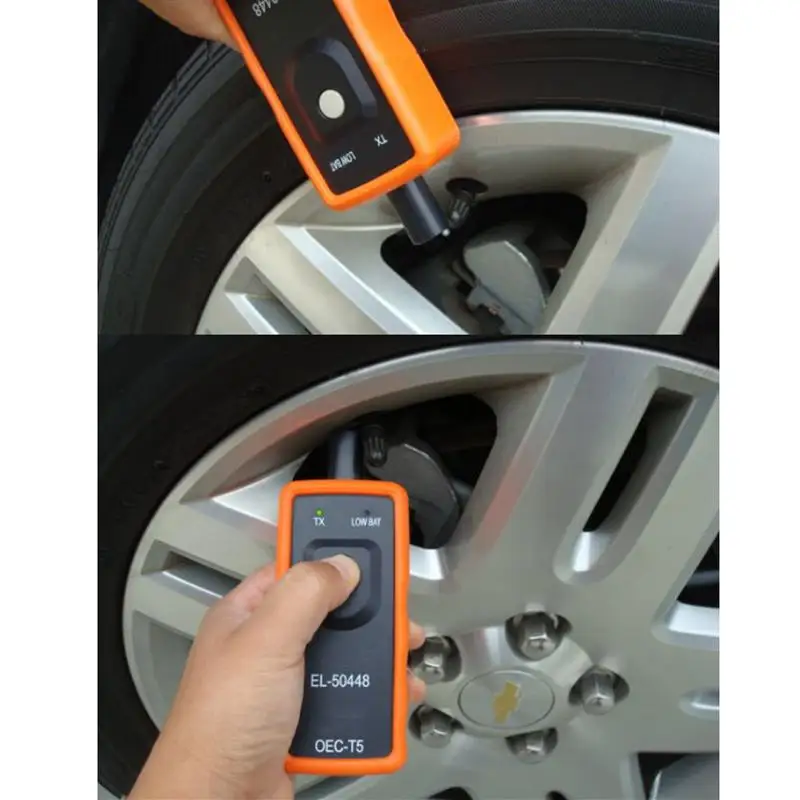
These are special small-sized devices mounted on wheels to monitor tire pressure (and sometimes temperature).
There are several types of pressure sensors:
The design and function of such devices depends on the type of tire pressure monitoring system used.
These are miniature pressure gauges that measure air pressure in tires. Structurally, they are made in the form of a transparent cap screwed onto the nipple instead of the usual protective one. With the help of pistons of a certain color, they give out a corresponding signal: if the pressure is more than 2 bar - green, from 1 to 2 bar - yellow, less than 1 bar - red.
Among these tire pressure monitoring systems, the simplest sensors are the sensors of the fairly common ABS brake system that monitors wheel speed. A flat tire reduces the outside diameter of the tire, causing it to spin faster and increase its internal temperature. Tracking these parameters, which are nominally installed and programmed as necessary, the sensors transmit information to the on-board computer, which generates an appropriate signal. In this case, the installation of any additional equipment is not required.
A flat tire reduces the outside diameter of the tire, causing it to spin faster and increase its internal temperature. Tracking these parameters, which are nominally installed and programmed as necessary, the sensors transmit information to the on-board computer, which generates an appropriate signal. In this case, the installation of any additional equipment is not required.
More accurate are electronic devices that directly measure the air pressure in the tire. Each of them has its own power supply (small-sized battery) and is connected via a radio frequency channel (Bluetooth) to a control and/or signaling unit.
These sensors can be mounted on the outside of the wheel on the spool instead of the protective cap. But more often they are built into the tubeless tire instead of regular nipple fungi or simply attached to its inner surface.
As a control and indication element, a separate block with elements of light and / or sound signaling, or a mobile device (for example, a regular smartphone) with special software installed on it can be used.
Installing mechanical sensors is not difficult even for a novice car enthusiast. To do this, just unscrew the standard caps on the wheels and put the purchased devices in their place.
Electronics can be tricky. If the system provides for the use of external sensors, then their installation is also easy. The only difficulty can be caused by connecting the control unit if it does not have autonomous power from the built-in accumulator or battery.
To install the internal electronic sensor, it is necessary to disassemble the tire and insert the device in place of the standard nipple fungus. It is difficult to do this at home, because after beading a tubeless tire, it must be inflated at high pressure so that the edges of the tire immediately sit on the disc. This will require a compressor, which is unlikely to be available in the garage of an ordinary motorist.
After installing the sensors on the wheels, it is necessary to connect the control unit and / or alarm and configure the system as a whole - “register” each element so that the signal from it is visible to the control unit or on-board computer.